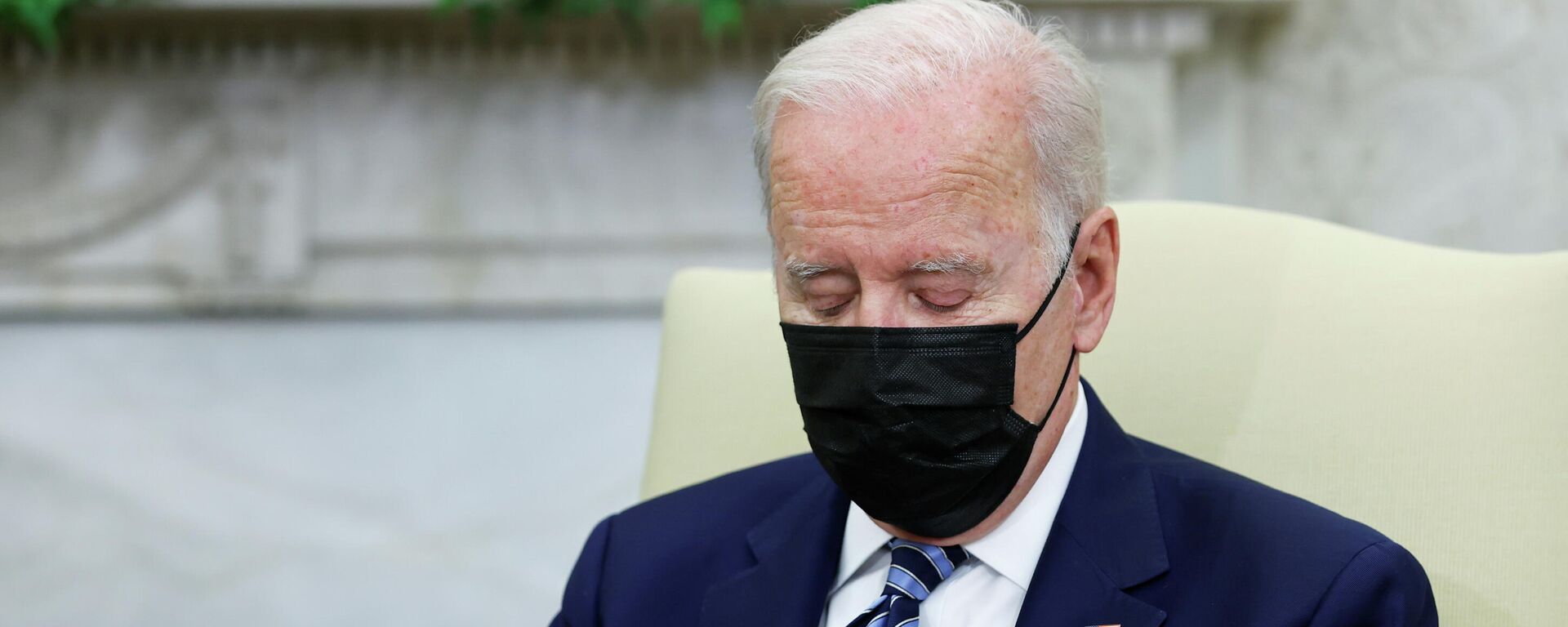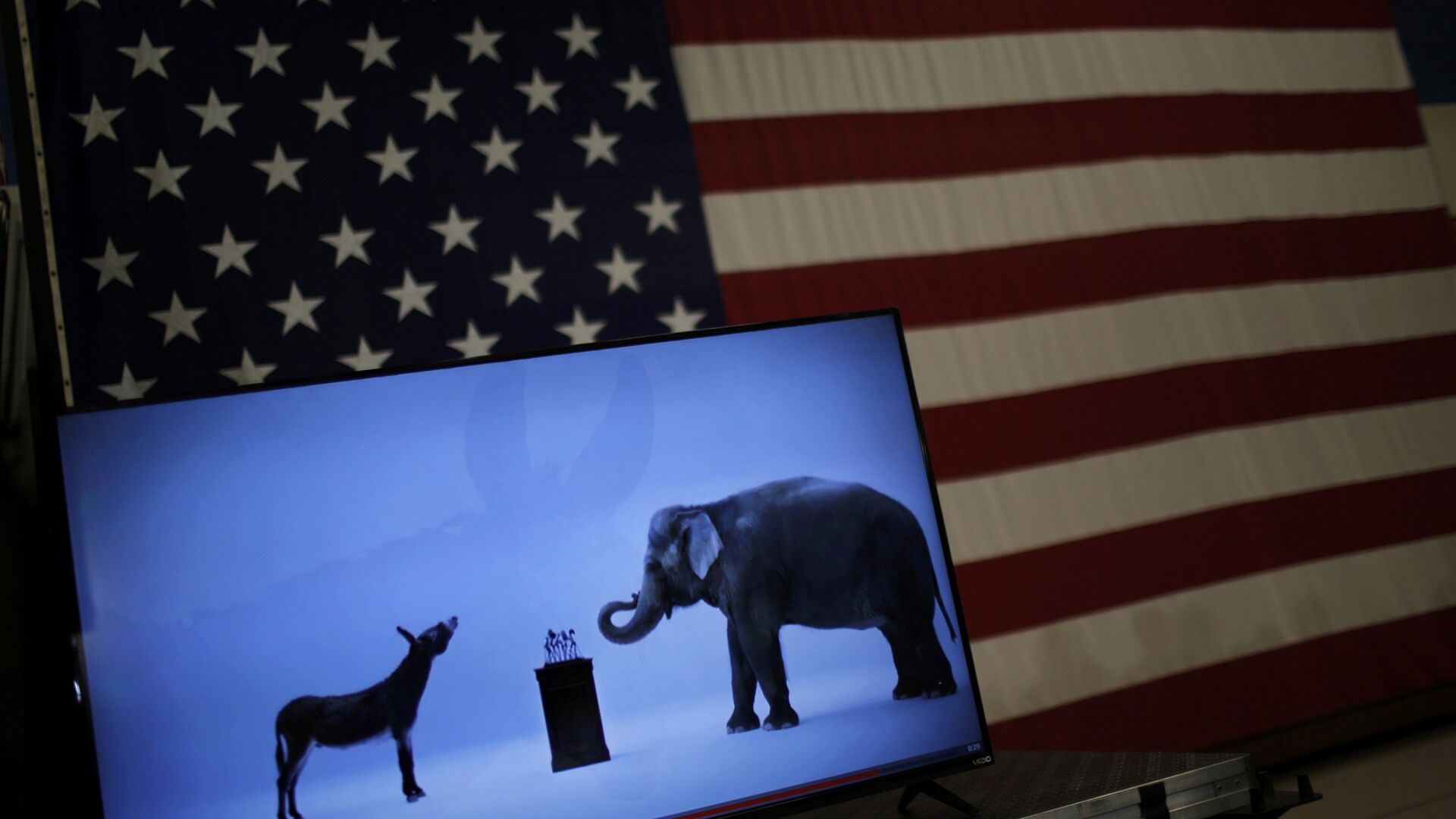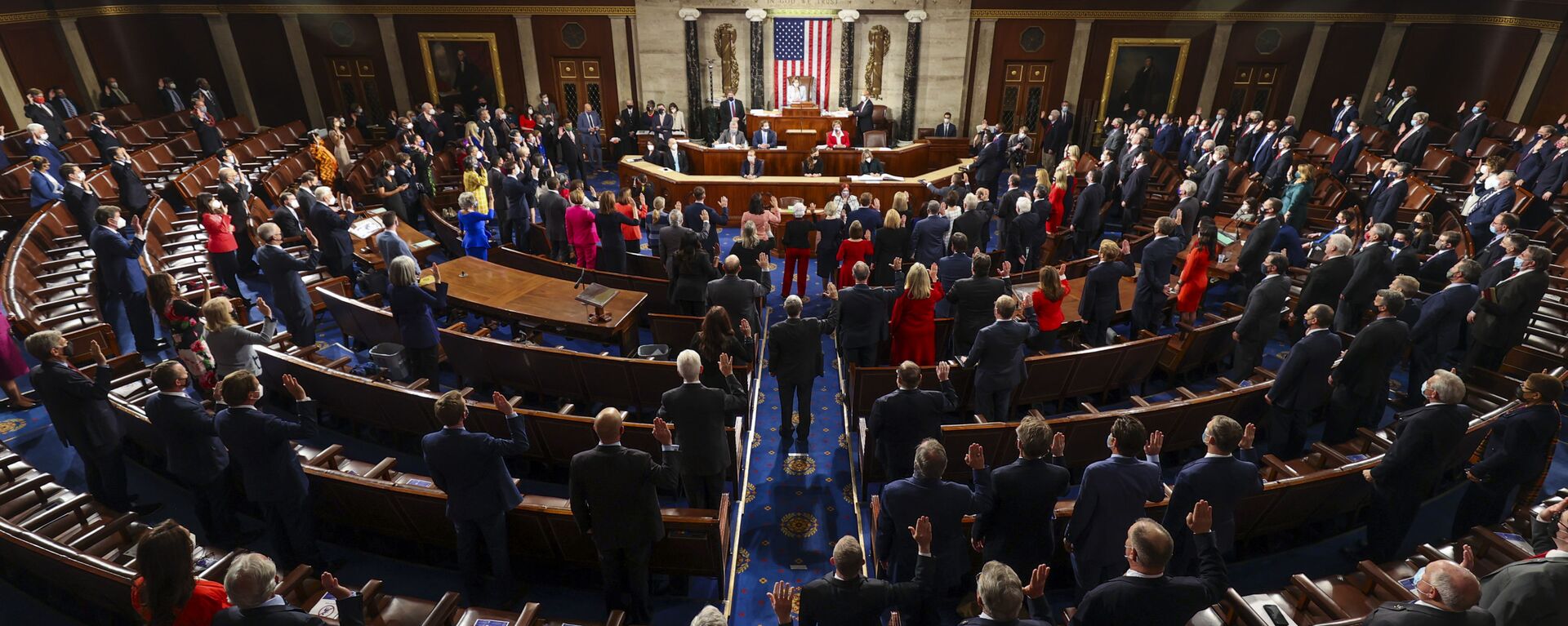https://sputnikglobe.com/20220120/share-of-us-voters-siding-with-gop-on-the-rise-which-is-bad-news-for-dems-ahead-of-2022-midterms-1092403073.html
Share of US Voters Siding With GOP on the Rise, Which is Bad News for Dems Ahead of 2022 Midterms
Share of US Voters Siding With GOP on the Rise, Which is Bad News for Dems Ahead of 2022 Midterms
Sputnik International
Gallup reports that share of US voters siding with the Republican Party has soared over the last year, while the Democratic Party is facing waning support.
2022-01-20T17:10+0000
2022-01-20T17:10+0000
2022-10-19T20:35+0000
joe biden
gallup
us house of representatives
newsfeed
world
us
senate
approval ratings
gop
republicans
https://cdn1.img.sputnikglobe.com/img/103691/45/1036914551_0:171:3500:2140_1920x0_80_0_0_980ca9ace986b0a9b753ee6bbbdcbd98.jpg
The American publics' preferences have shifted from a nine-point Democratic advantage to a five-point GOP edge – it's the biggest swing in one calendar year for each party, writes Gallup, an American analytics and advisory company based in Washington, D.C.Meanwhile, the share of Democratic-leaning Independents shrank from 19 percent to 14 percent, while the share of those identifying as GOP-leaning Independents soared from 15 percent to 19 percent, according to the company.Gallup's Senior Editor Jeff Jones notes that the Dems' lead in Q1 was the largest for the party since Q4 of 2012, when the Democrats also had a nine-point advantage over the Republicans. Previously, the Democratic Party outperformed the GOP by a double-digit margin in isolated quarters between 1992 and 1999 and "nearly continuously" between mid-2006 and early 2009, the pollster highlights.For its part, the GOP has held a five-point advantage in just four quarters since 1991. They managed to outpace the Democratic Party by a larger margin in the aftermath of then-President George H.W. Bush's victory in the Persian Gulf War, according to the company.Jones links the swing to the popularity of the party heads. The Gallup editor explains that while former President Donald Trump approval ratings fell sharply in the beginning of 2021, when he left office, Joe Biden's popularity was relatively high. However, the incumbent president's approval rating started to plummet last summer and continued its slide amid chaotic withdrawal from Afghanistan, raging COVID pandemic, soaring inflation, and Biden's failure to deliver on his bold election promises.The emerging trend is bad news for Democrats ahead of the 2022 midterms, said Christine Matthews, a veteran Republican pollster, as quoted by NPR on Tuesday. According to her, the GOP's recent lead is "more significant for the midterms and possibly not tremendously significant for the long term."Last spring, the Atlantic and Intelligencer warned the Dems about the possibility of a defeat during the midterms, saying that voters tend to "punish" the president’s party in the next midterm election. Intelligencer highlighted that there were two exceptions in the last three decades, but in both cases the presidents' approval ratings exceeded 60 percent. The media outlet noted that Joe Biden's favourability remained below that threshold. However, at that time, the president's job approval rating stood at 54%, while currently it fluctuates between 39 percent and 43 percent in various polls.Yet another sign of the midterm challenge to the Democratic Party is "exodus" of House Democrats, as The Financial Times suggested on Wednesday. The newspaper notes that "retirements by lawmakers from Joe Biden’s party put a razor-thin majority at risk." The FT's analysis shows that a whopping 28 out of 221 House Democrats have said they will not stand for re-election, with at least seven Democratic representatives vacating vulnerable seats which they won "by single-digit margins last time around."
https://sputnikglobe.com/20211118/down-we-go-bidens-approval-ratings-hit-new-low-as-36-approve-of-his-job-new-poll-reveals-1090838876.html
https://sputnikglobe.com/20210508/is-pelosi-ready-to-raise-the-white-flag-why-dems-are-likely-to-surrender-the-house-to-gop-in-2023-1082829549.html
https://sputnikglobe.com/20220119/dems-turf-battles-how-bills-links-to-epstein-may-nip-hillarys-potential-2024-bid-in-the-bud-1092375897.html
Sputnik International
feedback@sputniknews.com
+74956456601
MIA „Rossiya Segodnya“
2022
News
en_EN
Sputnik International
feedback@sputniknews.com
+74956456601
MIA „Rossiya Segodnya“
Sputnik International
feedback@sputniknews.com
+74956456601
MIA „Rossiya Segodnya“
gallup study, republican party, democratic party, 2022 midterm elections, nine-point democratic advantage, five-point gop edge, exodus of house democrats, democratic party's possible defeat in 2021
gallup study, republican party, democratic party, 2022 midterm elections, nine-point democratic advantage, five-point gop edge, exodus of house democrats, democratic party's possible defeat in 2021
Share of US Voters Siding With GOP on the Rise, Which is Bad News for Dems Ahead of 2022 Midterms
17:10 GMT 20.01.2022 (Updated: 20:35 GMT 19.10.2022) Support for Democrats has waned across the country over the last 12 months, according to Gallup, which polled over 12,000 respondents over the course of 2021. What message does this trend send about the 2022 midterms?
The American publics' preferences have shifted from a nine-point Democratic advantage to a five-point GOP edge – it's the biggest swing in one calendar year for each party,
writes Gallup, an American analytics and advisory company based in Washington, D.C.
Thus, in the first quarter (Q1) of 2021, 49 percent of American adults identified as Democrats or leaned Democratic while 40 percent sided with Republicans. However, by Q4 of 2021, 47 percent of respondents identified as GOP versus 42 percent, who said they were Democrats.
Meanwhile, the share of Democratic-leaning Independents shrank from 19 percent to 14 percent, while the share of those identifying as GOP-leaning Independents soared from 15 percent to 19 percent, according to the company.
Gallup's Senior Editor Jeff Jones notes that the Dems' lead in Q1 was the largest for the party since Q4 of 2012, when the Democrats also had a nine-point advantage over the Republicans. Previously, the Democratic Party outperformed the GOP by a double-digit margin in isolated quarters between 1992 and 1999 and "nearly continuously" between mid-2006 and early 2009, the pollster highlights.

18 November 2021, 21:33 GMT
For its part, the GOP has held a five-point advantage in just four quarters since 1991. They managed to outpace the Democratic Party by a larger margin in the aftermath of then-President George H.W. Bush's victory in the Persian Gulf War, according to the company.
Jones links the swing to the popularity of the party heads. The Gallup editor explains that while former President Donald Trump approval ratings fell sharply in the beginning of 2021, when he left office, Joe Biden's popularity was relatively high. However, the incumbent president's approval rating started to plummet last summer and continued its slide amid chaotic withdrawal from Afghanistan, raging COVID pandemic,
soaring inflation, and Biden's failure to deliver on his bold election promises.
The emerging trend is bad news for Democrats ahead of the 2022 midterms, said Christine Matthews, a veteran Republican pollster, as
quoted by NPR on Tuesday. According to her, the GOP's recent lead is "more significant for the midterms and possibly not tremendously significant for the long term."
"By the time that we get to summer, if Democrats are still tied on the generic ballot, it's going to be a disaster for them in the midterms," Matthews told NPR. "And they typically need to lead by five-seven points to do well."
Last spring,
the Atlantic and
Intelligencer warned the Dems about the possibility of a defeat during the midterms, saying that voters tend to "punish" the president’s party in the next midterm election. Intelligencer highlighted that there were two exceptions in the last three decades, but in both cases the presidents' approval ratings exceeded 60 percent. The media outlet noted that Joe Biden's favourability remained below that threshold. However, at that time,
the president's job approval rating stood at 54%, while currently it fluctuates between 39 percent and 43 percent in various polls.

19 January 2022, 19:34 GMT
Yet another sign of the midterm challenge to the Democratic Party is "exodus" of House Democrats, as The Financial Times
suggested on Wednesday. The newspaper notes that "retirements by lawmakers from Joe Biden’s party put a razor-thin majority at risk." The FT's analysis shows that a whopping 28 out of 221 House Democrats have said they will not stand for re-election, with at least seven Democratic representatives vacating vulnerable seats which they won "by single-digit margins last time around."
"The exodus underscores the increasingly slim likelihood that the Democrats will be able to cling on to control of the lower chamber in the autumn," the newspaper summed up.





